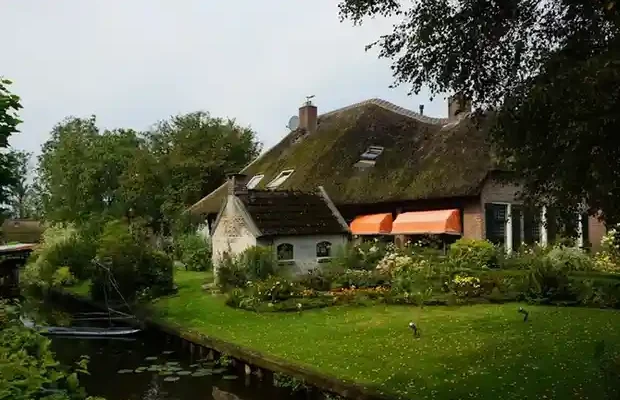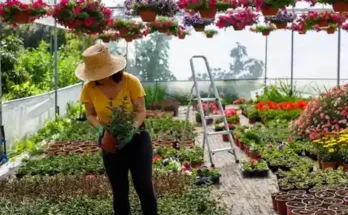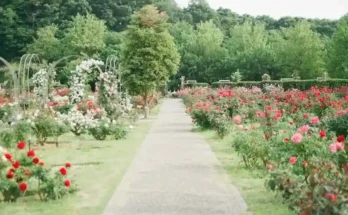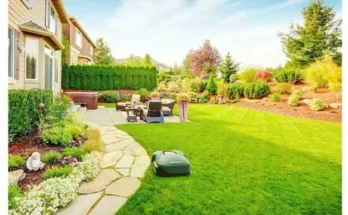A garden is far more than a patch of land filled with plants—it’s a living, breathing expression of harmony between humans and nature. Whether sprawling or modest, wild or carefully trimmed, gardens carry stories. They reflect dreams, history, culture, and often, the soul of the gardener behind them.
In every leaf, every petal, every whisper of wind through branches, there’s life—quietly thriving, inviting us to slow down, breathe in, and remember that we are part of something greater. Gardens are both ancient sanctuaries and modern-day escapes. In this exploration of the garden’s secret life, we’ll uncover its rich past, its powerful presence, and the potential it holds for the future.
A Brief History of the Garden:
The relationship between humans and cultivated nature stretches back thousands of years. Gardens were not always about beauty—they began as necessities, evolving slowly into the places of peace and art they are today.
Early humans cultivated plants to feed their families, planting herbs and vegetables close to home. These primitive gardens were functional, but even then, people noticed the comfort in green spaces. Ancient Egyptians created lush courtyard gardens to honor the gods and escape the harshness of desert life. In Persia, the concept of paradise was literally born from walled gardens filled with flowing water and symmetrical design.
As centuries passed, gardens took on new forms and purposes. The Zen gardens of Japan became places of meditation, while the grand landscapes of European palaces—like Versailles—were engineered expressions of power and control. The garden shifted from survival tool to status symbol to spiritual retreat, adapting to the values of each culture it touched.
The Garden as a Living Canvas:
A garden is never finished. It grows, wilts, blooms, and evolves. It’s a work of art in motion, one that changes with the seasons and with the hands that tend it.
- The Role of the Gardener
A gardener is both an artist and a scientist. They choose colors, textures, and heights like a painter with a palette, but they must also understand soil composition, sunlight, and weather patterns. Each decision shapes how a garden lives and breathes.
Some prefer neat rows of roses, while others let wildflowers roam freely. Some plan for butterflies and bees, while others aim for silence and solitude. Every garden reflects its creator’s mind and mood. It’s a form of storytelling without words.
- Colors, Textures, and Time
Gardens don’t demand instant gratification—they ask for patience. Seeds planted in spring may not bloom until summer. A tree might take years to offer shade. This slow unfolding teaches us about timing and transformation. Watching buds appear after a cold winter is a gentle reminder that change takes time, but it comes.
From the velvety petals of a deep red peony to the feathery texture of ornamental grasses swaying in the breeze, every element in a garden contributes to its unique personality. Nature’s palette is endless—and endlessly surprising.
The Emotional Power of Gardens:
There’s something undeniably calming about stepping into a garden. It’s as if time slows down. The worries of modern life—emails, deadlines, noise—fade into the background. In that green stillness, many find healing.
- Gardens and Mental Well-being
Science supports what many already feel in their bones: gardens are good for the soul. Studies have shown that spending time in green spaces can lower blood pressure, reduce anxiety, and improve mood. Even the simple act of digging in soil can release beneficial microbes that boost serotonin, the brain’s happiness chemical.
Gardening gives us purpose and a sense of accomplishment. Watching a seed grow into a flower because of your care is a quiet but profound triumph. It’s an act of creation that demands presence—a rare thing in our distracted world.
- Nature’s Therapy
Therapeutic gardens are now common in hospitals, nursing homes, and rehabilitation centers. The presence of greenery helps patients heal faster, feel less pain, and connect with something outside of themselves. For people with dementia or PTSD, gardening can offer routine, peace, and grounding.
Even for those without a diagnosis, a few minutes spent watering plants or pulling weeds can be a form of meditation—a reset button for the day.
Wildlife and the Garden Ecosystem:
Though they may appear quiet, gardens are teeming with life. Beneath the surface and between the stems, tiny dramas unfold every day. Birds, bees, butterflies, and beetles all find sanctuary in gardens, making them miniature ecosystems in their own right.
- Pollinators and Partners
A garden is not just a visual feast—it’s a life support system. Flowers provide nectar to bees, who in turn pollinate plants and ensure their continued growth. Butterflies dance from bloom to bloom, adding beauty while doing essential work. Even worms and insects that go unnoticed enrich the soil and keep the garden thriving.
Without these small creatures, gardens—and agriculture as a whole—would collapse. Inviting wildlife into our green spaces isn’t just nice; it’s necessary.
- Balancing Control and Chaos
Many modern gardeners are rethinking traditional ideas of perfection. Instead of fighting weeds and pests with chemicals, they’re learning to live with a bit of wildness. Letting nature take the lead—by planting native species, avoiding pesticides, and encouraging biodiversity—makes gardens healthier for both people and planet.
This shift toward eco-conscious gardening reflects a broader awareness of climate change and sustainability. Gardens can be part of the solution: cooling cities, cleaning air, and supporting fragile pollinator populations.
Urban Gardening and the Future:
Not everyone has acres of land or rolling hills. In fact, most don’t. But gardens aren’t limited by space. They grow in windowsills, balconies, rooftops, and community lots. Urban gardening is redefining what it means to be a gardener in the 21st century.
- Greening the Concrete Jungle
As cities become more crowded and climate concerns grow, urban green spaces are more vital than ever. Rooftop gardens reduce heat, improve insulation, and create habitats. Community gardens bring neighborhoods together, providing fresh food and a shared purpose.
These pockets of green offer hope in places that can often feel gray and disconnected. They remind us that nature belongs everywhere—not just in rural or suburban areas.
- A New Generation of Gardeners
Younger generations are embracing gardening not just as a hobby, but as activism. They’re growing their own food, reducing waste, composting, and turning lawns into pollinator-friendly meadows. Through social media, they share tips, successes, and setbacks, building a virtual garden of ideas and support.
Gardening is no longer something just for retirees or country dwellers. It’s for everyone—with a pot, a patch, or a dream.
Conclusion:
In a fast, digital world, gardens offer something rare: slowness, beauty, and quiet magic. They are places of work and wonder, growth and decay, solitude and connection. A garden doesn’t ask much—just care, attention, and time. But in return, it gives endlessly.
Whether you’re planting herbs on a balcony, strolling through a botanical garden, or dreaming of one day tending your own backyard Eden, remember this: every garden is a love letter to the Earth. And every gardener, knowingly or not, becomes a part of nature’s timeless story.




